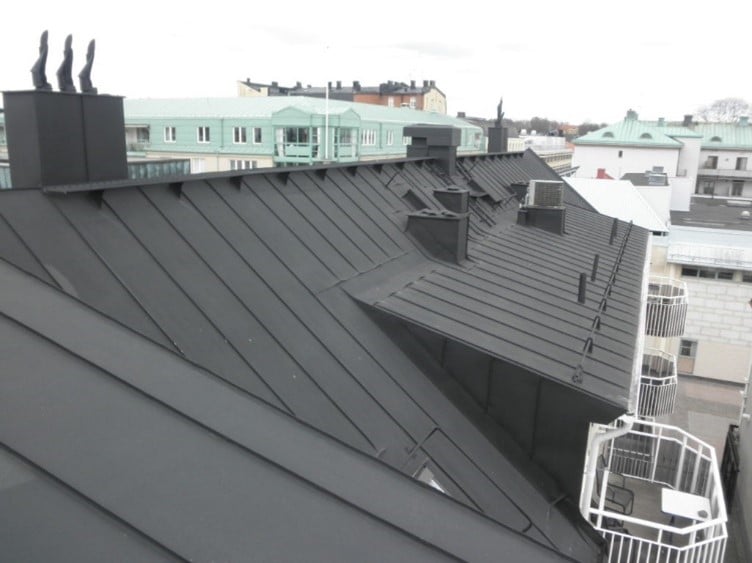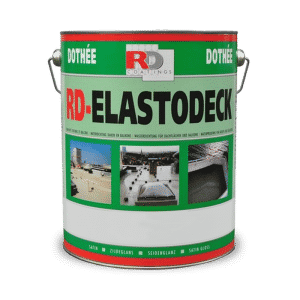The Problem
Many flat roofs around the UK are originally protected with bitumen based membranes. An efficient and inexpensive method of covering flat roofs on warehouses, factories and buildings.
Bitumen roofs are subject to extreme conditions and many stresses due to contraction as a result of changing temperatures. At the same time, they need to protect against degradation from continuous exposure to the elements. Climates around the world are becoming more extreme with increased rainfall and above average temperatures.
Due to the continuous movement of buildings and exposure to harsh weather conditions, the membrane eventually will detach from the substrate, will tear, allowing water to permeate. Once breached the membrane quickly deteriorates leading to leaking roofs.
Once this process commences it is critical to act fast to protect the structure and contents of the building. The economic losses are high in terms of asset write off and lost production.
In the case of complex industrial roofs with piping and stacks that have restricted access, repairing and waterproofing only the specific areas where leakage is occurring is not an effective solution, as water can travel under the membrane once penetrated.
Overcoating bituminous sheets can be problematic as many solvent based paints will damage the intact bitumen or will not have the same elasticity and result in mud cracking on the surface. Removing an old bituminous membrane and installing a new one can also be problematic and expensive.
Elastodeck is the solution a compatible coating which can be applied onto bituminous surfaces over one year old. A waterproof coating with 200% elasticity and excellent adhesion.

The Solution
Elastodeck
Elastodeck is an excellent solution for the renovation of old bituminous roofs. An Ecological and Sustainable coating with excellent adhesion and flexibility, which will produce a watertight finish onto the intact existing bitumen surface.
Applied to a flat roof, it produces an elastic protective membrane similar in appearance to rubber and will solve the problems of water infiltration.
Estimated service life in excess of 15 years.
As a result of its unique flexibility and permanent elasticity, Elastodeck adheres to the bitumen surface and follows the expansion and contraction movements of the roof. The new Elastodeck membrane will be durable and highly resistant to UV and the changing weather conditions.
The system is used successfully in North America, Europe, South East Asia, Mediterranean and Scandinavian countries. A track record with extremes of climatic conditions.
Elastodeck is a lightweight solution, after the coating has been applied , the additional weight on the roof is only about 1.3 to 3 kg per m².
It is a unique primer finish, no additional primers or adhesion promoters are required. It is easy to apply, fast drying, a very reliable solution that does not compromise on quality, health and safety.
A Low Odour, Low Emission, Ecological and Sustainable coating available in an extensive range of colours in a matt 15% finish. Made in the West Midlands for free delivery throughout the UK.
Benefits & Performance
The service life of the system is in excess of 15 years. The system has a global track record Waterproofing, Protecting and Decorating flat roofs. It delivers great benefits to the owner of the building in terms of a cost-effective solution without the need for removal of intact existing coatings or abrasive blast cleaning. For the applicator it is a simple safe single product solution which is easy to apply.
For the project manager:
- Economical solution for Bitumen Roofs.
- Highly effective and durable system.
- 15 Year performance.
- Ecological and sustainable paint.
- Low VOCs and emissions. No fire risks.
- Low odour, minimal disruption.
- Made in the West Midlands.
- Wide choice of RAL & NCS colours.
- Free Delivery no hidden costs.
For the applicator:
- Single product solution. No primers.
- Intact Bitumen can be overcoated
- Fast repairs and Easy to Apply.
- Low Odour, Low Emissions. No fire risk.
- No overcoating or pot life restrictions.
- Dry fall coating, less maintenance.
- Made in the West Midlands.
- Wide choice of colours.
- Free Delivery to site.
Preparation
Weather
As with any outdoor project, try to avoid starting a job in wet conditions. A minimum of 10 °c (50 °f) and no rain forecast during and immediately after application are required to be able to apply the product successfully. Above 15 °c ( 59 °f), working conditions are perfect and enable higher productivity. If the project is located in a very hot area with very intense sunshine avoid applying the system when the sun is the most intense and work early in the morning or in the late afternoon.
If you are working in humid climates, and especially if it is cold after sunset such as in the autumn , be sure to complete the job a few hours before dark. Otherwise, you risk having condensation covering the fresh paint and preventing it from drying. If you are working at dawn, be mindful of condensation on the surface.
Surface preparation
The surface must always be clean, dry, degreased and free of any contaminant.
High pressure water blasting is recommended at a minimum of 220 bar / 3200 psi equipped with a rotating zero-degree angle nozzle. This method will remove surface contaminants, loosely adhering bitumen and loose concrete.
Cleaning by mechanical or power tools is advised when more detailed surface preparation needs to be done on objects within the roof, such as chimneys, access ladders and bolts that could be heavily rusted.
Moss and mould can be removed with biodegradable solutions that are readily and commercially available.
If there is a bitumen coating still present, check if it is still adhering properly, if not remove it. Feather the edges back to create a smooth transition. Finally rinse and brush with clean water.
The surface must be completely dry before applying the waterproofing system.
Edges and ledges
Also check the edges and connections with walls, chimneys or any other equipment that can be found on a roof. These are potential weak spots subject to water infiltration.
Elastodeck can be used on most types of mineral surfaces and is easy to use with a roof fleece to seal these more fragile areas.
Equipment
Elastodeck can be applied by brush on specific localised areas and with an airless gun on the main surface. If spraying is not possible, it can be applied by roller. It will take longer, and you will need to apply more coats to achieve the minimum thickness required.
For airless spray use a pressure of at least 180 bar or 2600 psi and a gun nozzle between 0.017 and 0.023 inches.
For application by roller, it is recommended to use 14 mm / ½ inch polyamide rollers.
System Application
Preparation of Elastodeck
Elastodeck is supplied ready to use, stir it mechanically for several minutes and optionally dilute up to 3-5% with water if working in very hot weather to slightly delay drying.
Installation of the reinforcement mesh
Start with the specific areas: edges of chimneys, ventilation, walls, drains these are vulnerable areas that need attention. The use of the 20 cm wide Roof Fleece is generally recommended for its ease of handling.
Cut and apply the mesh half on the roof and half on the object so that there is a minimum of 10 cm (4 inches) of mesh on each surface. Then apply a brush coat of Elastodeck above and through so that the coating comes into contact with the substrate.
For flat roofs which are leaking it will be necessary to use a roof fleece to reinforce the higher film build required.
The roof fleece reinforcement mesh can be laid flat to the remaining surface of roof. For large areas use the 120cm ( 47inch) wide roof fleece and cut it to the appropriate length depending on the situation. The fleece is perforated and extremely tough virtually impossible to tear.
Unroll the Roof Fleece on the flat roof surface and distribute it evenly. The connections between each mesh must have an overlap of at least 5 cm (2 inches). Then apply with a roller or brush a first coat of Elastodeck.
Allow 4 to 6 hours to dry before applying the second coat.
This first step takes the most time since you are handling the mesh and the paint at the same time. The final coat will be easier to apply.
The application
After the application of Elastodeck through the roof fleece, the application of the second coat will generally be carried out with an airless spray gun. It allows rapid application of a thick film with a uniform surface. Elastodeck is a dry fall coating reducing overspray and cleaning.
The final thickness is important and must comply with our recommendations. Your previously coated bitumen roof is now protected against water infiltration and concrete decay. Balconies typically require 1.5-2kg per square metre, roofs 1.5-3kg if a roof fleece is employed.
Advice
Elastodeck is available in a wide variety of colours from the RAL Classic and NCS ranges. Since it has excellent opacity, we recommend using a different colour per coat. This will help you to perfectly distinguish one layer from another and visually check two full coats have been applied.
Finishing options
Elastodeck is a waterproofing system that does not require any topcoat. But there are cases where it might prove useful or desirable like:
- in case of regular traffic on the roof, Hydrograff HP two pack polyurethane can be applied for additional protection against mechanical damage.
- If there is a risk of chemical contamination from chimneys on the roof or nearby, use Hydrograff HP Clear.




